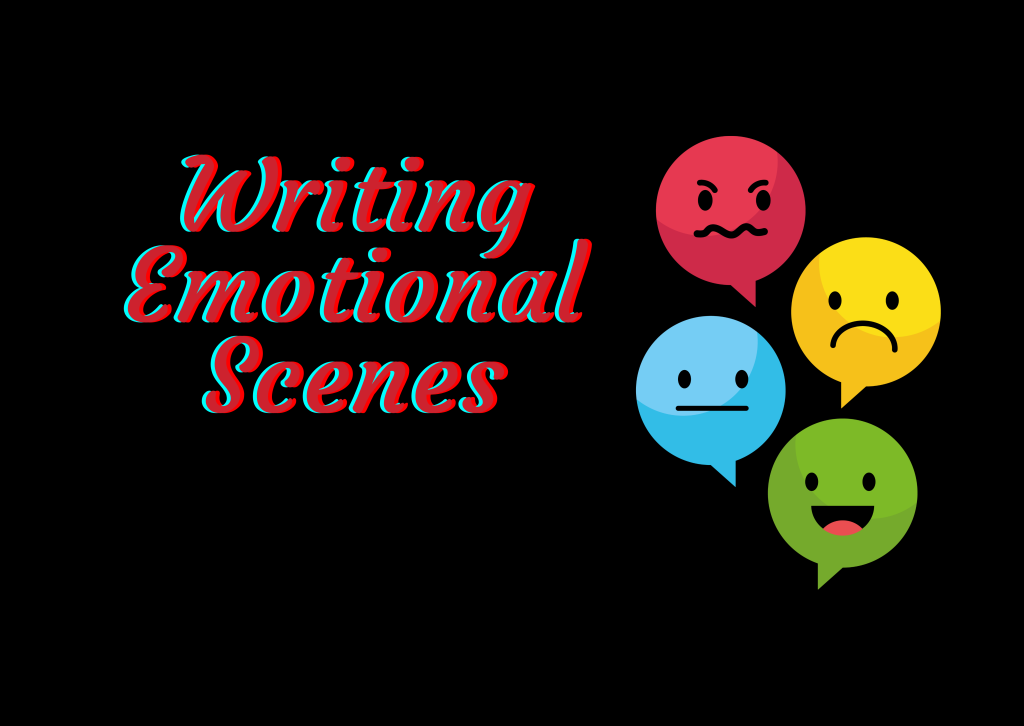
Hi everyone! How are you all? Today, I’m exploring the art (because it is an art) of crafting emotional scenes.
Writing Emotional Scenes
To effectively write emotional scenes, it is vital to use every tool in your writing toolbox, including setting, dialogue, and character development, to create an immersive and believable experience for your readers.
One of — if not the — most essential elements of writing emotionally charged scenes is the development of your characters. Before a scene makes the reader feel something, you must develop characters that the reader can care about. Your characters’ experiences and emotions must feel genuine and relatable to your audience. This can be achieved by adding depth to your characters by fleshing out their past experiences, innermost fears, and desires. This also means giving your characters distinct voices, personalities, and motivations that make them believable rather than one-dimensional stereotypes or plot devices.
You should also identify the emotions your characters are experiencing. Start by asking yourself questions such as: “What is causing the emotion?” “How intense is the emotion?” and “What does it feel like?” By doing so, you can tap into your own emotional reservoir and create scenes that come to life and come across as authentic.
Using sensory details to immerse the reader in the scene is another good technique. Your readers want to feel they are in the room with the characters, sharing the same feelings and details. Using descriptive language that engages the five senses, such as sight, sound, smell, taste, and touch, will help you create a world your readers can jump in and relate to. For example, if a character is angry, describe what they see, what they can smell, and hear around them. If they’re devastated, describe the sensation of tears flowing down their face.
Dialogue is also essential to lending an emotional tone to a scene. Consider the tone of a character’s voice and word choice when writing dialogue to make it more impactful. Additionally, writing internal dialogue can help readers better understand your characters’ thoughts and feelings, allowing for a deeper emotional connection.
Another helpful technique is the use of subtext. This is the deeper meaning beneath what is being said or done. Subtextual writing can add a layer of complexity to your characters as they navigate their emotions and experiences. A character may say something, while their thoughts and body language contradict their words.
Furthermore, something often overlooked when it comes to writing an emotional scene is contrast. Contrasts can be used to create tension and emotional depth in a scene. For example, a character’s laughter in the face of tragedy can be both heartbreaking and uplifting. Contrasts help to make scenes more complex and emotionally resonant.
Finally, it’s vital to remember that the pacing and timing of your emotional scenes are crucial in engendering an emotional response in your readers. You don’t want to overwhelm the reader by showing too many emotions in one go or lingering on a scene for too long. Carefully crafting the pace and timing of your emotional scenes can keep the reader engaged and connected to the story. Finding the perfect balance between action, dialogue, and description can enhance the scene’s emotional impact.
Overall, writing emotional scenes in fiction can be tricky, and it requires careful attention to character development, dialogue, and setting. By crafting multi-dimensional characters, using clear and strong dialogue, and setting the scene effectively, you can create immersive and emotionally charged stories that will resonate with readers.
Thank you, as ever, for reading today’s post. I hope you found it interesting!
Until next time,
George
© 2024 GLT
Categories: Characters, scenes, Writing Tips

These are really great tips!! I hadn’t considered many of these before really helpful for someone learning to write about emotional scenes. great share thanks!
LikeLiked by 1 person
Thanks so much, Andrea! I really appreciate that!
LikeLike